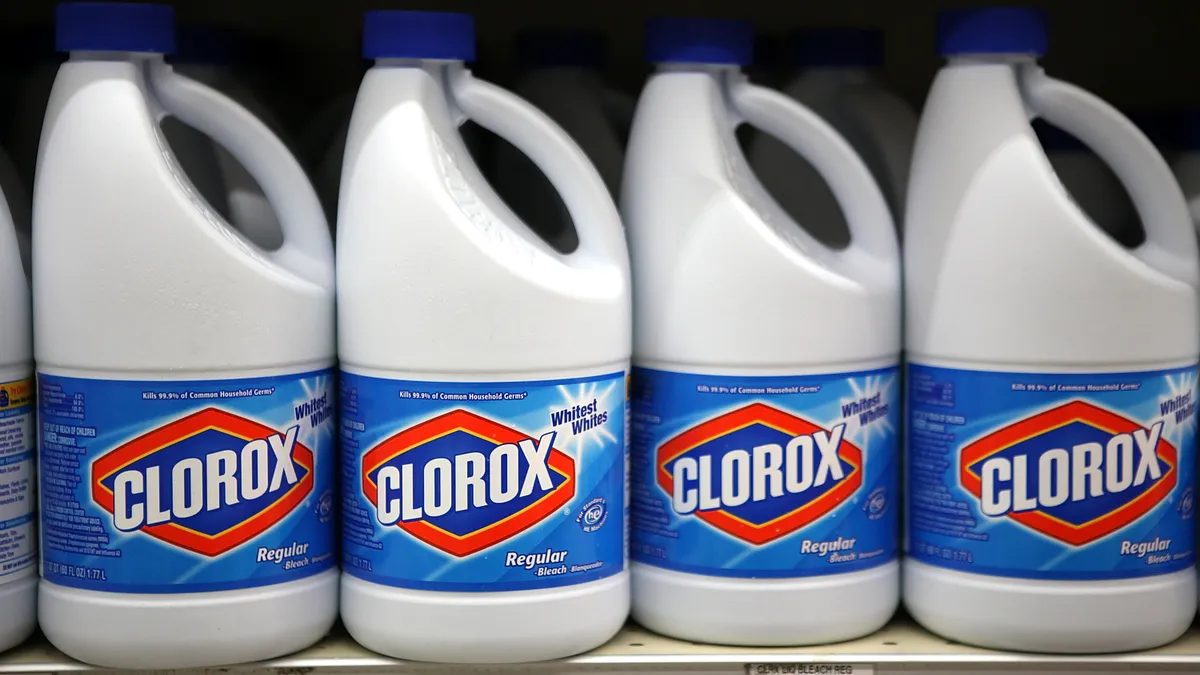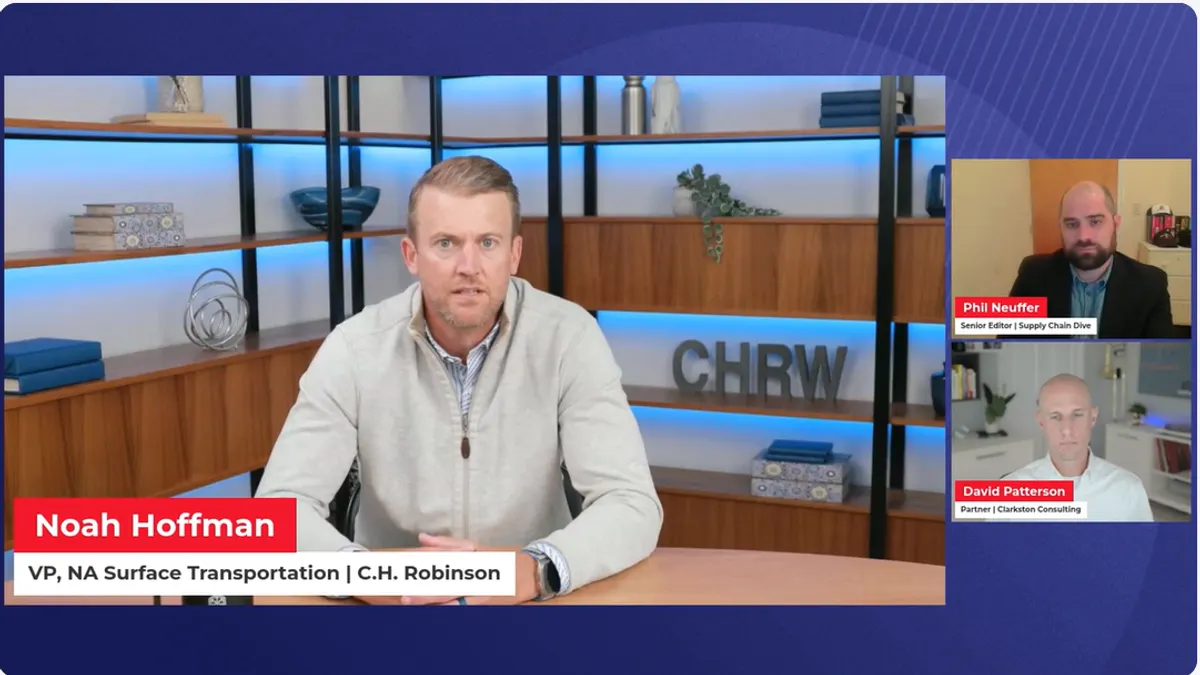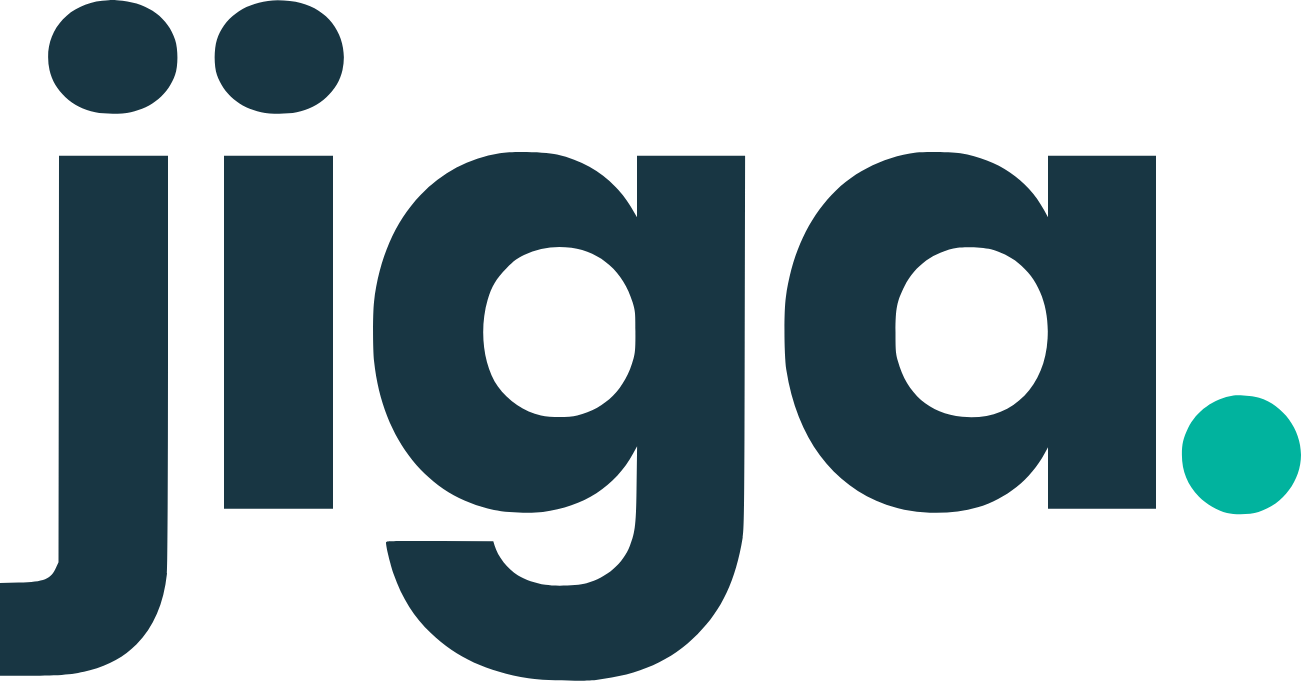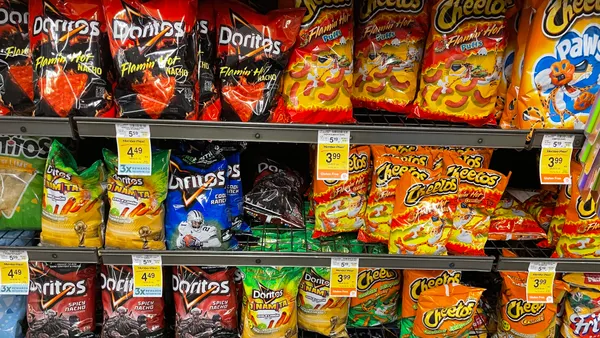Dive Brief:
- The Clorox Company has corrected inventory imbalances from migrating its U.S. supply chain and other business operations to a new enterprise resource planning system, executives told investors during a Nov. 3 earnings call.
- The company had gotten ahead of potential supply chain problems in making the transition by adding 1.5 weeks of inventory to the typical four weeks of goods held by retailers, the company reported in June.
- "We have largely recovered our inventories from the period during the ERP implementation disruption," CEO and Chair Linda Rendle told investors.
Dive Insight:
While Clorox retailers took on more inventory than usual during the ERP shift, the company did not observe any destocking behavior that impacted financial results, Rendle said. "At this point, we're not seeing anything material that we could call out for this quarter or for the remainder of the year."
The company did incur additional expenses during the quarter ending Sept. 30 to address disruptions in demand fulfillment stemming from a slower-than-expected ERP ramp-up, EVP and CFO Luc Bellet said. However, "if I look at the back half of the year, you should see pretty robust gross margin expansion in both Q3 and Q4."
Clorox's massive ERP upgrade rebuilt the company's data infrastructure, according to executives. Such technology migrations can cost a company tens of millions of dollars if they fail to go smoothly.
Clorox's ERP shift, part of a five-year, $500 million digitization effort started in 2021, marked a "major milestone" for the company, Rendle said. "While the transition presented some challenges, our team's resilience and adaptability allowed us to navigate them effectively, and we're already seeing the benefits ramp up across our operations."
Other manufacturers have undergone recent ERP transitions. They include Mondelēz International's $1.2 billion initiative and Lamb Weston's ERP shift in its North American operations.















